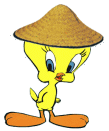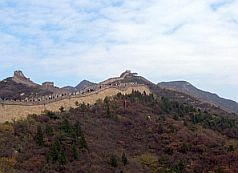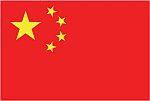
China
Informations
Despite the Chinese territory is vast, it's possible to cover long distances in two weeks. It is then imperative to travel by night train if you do not want to fly. Security is good and we manage to get some sleep so let's take the most of it.
As a matter of fact there is plenty to see and I had to pick out some destinations rather than others with the same interest. Beijing is of course a top destination but do you know the Emperor Qin, the first emperor of China, who left to posterity an amazing army of life-size terracotta warriors ?... To know more about it, go to Xi'an. Do you also know that the giant panda, an endangered species, and WWF's emblem is the animal symbol of China. To learn more, go to Chengdu.
General information about "the Middle Kingdom"
|
Motto : none
|
|
|
Symbol : The great wall
|
Flag :
The large star symbolizes the Chinese Communist Party who rules the nation. |
|
Capital : Beijing
"the northern capital" (as opposed to Nankin, the previous capital, called the southern capital) Landmark : the temple of Heaven and the forbidden city |
Population :
1.34 billion people (2009)
(17 million in Beijing, but the most populated town is Shanghai) |
|
Area : 9,596,961 km2 (5,963,275 square miles)
|
Currency : Yuan also called Renminbi (which means people's money).
|
|
Religion :
The party advocates atheism (59 %) so only 5 religions are acknowledged for 100 million practising people (according to official statistics) :
|
Political system : People's Republic (since 1949).
|
|
Official language : Mandarin (92%)
Note : there are 56 ethnic group each with its own language. |
Time zone : UTC +8h
(from United Kingdom : + 7h in summer and + 8h in winter) |
|
Architectural styles :
|
Folklore and traditions :
|
|
Culinary specialities :
|
Drink :
|
|
|


